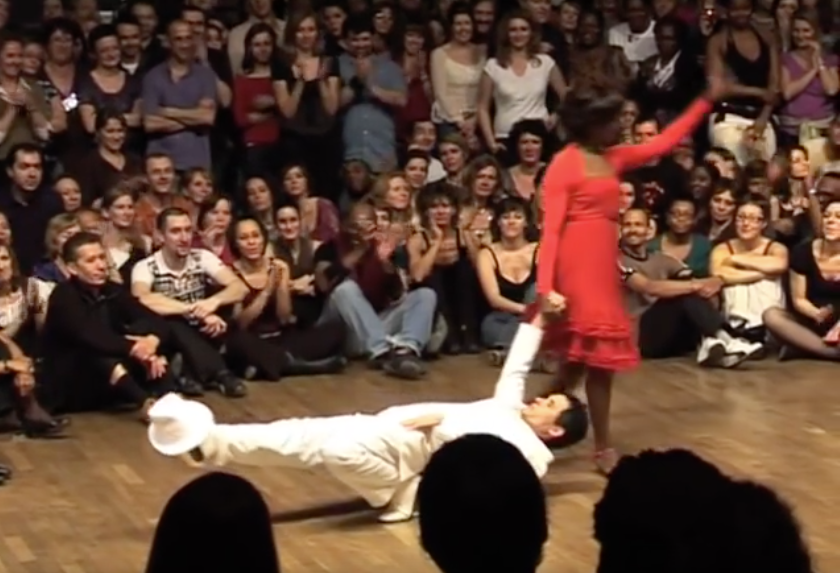
Here are two examples of Cubans dancing.
One, is a man dressed in white, from hat to shoe with a woman dressed in red. He carries her red fan secreted in his pant’s pocket. They have an audience but it is clear this is not just ordinary dancing. This is artful foot-work and hip-swing. Especially when he places his hat on his right toe and reclines parallel to the floor, while she holds his hand and circles him.
The second is in a club, joyously twirling on the dance floor. They are laughing and just thoroughly having a ball. He looks like he not too long ago got off from work on a manual labor job, and she, well, she made it home in time to change before dashing out to the get down. They–and indeed the whole crowded assembly, look like they do this all the time, or at least most weekends.
The first set is obviously what we would consider the art of dance. However, we should recognize that art is just a conscious stylization of the ordinary. The ordinary necessarily precedes the artful.
While we can, and should, greatly admire the artists and the work they produce, we should also never ever forget that there is an important connection. No art without the ordinary. No artists without the people. Art is just an extension of the ordinary. Disciplined. Practiced. Exquisite. Special. And often rare. But were it not for the everyday people, there could be no art.
Or to put it another way: art is just the ordinary made special.
